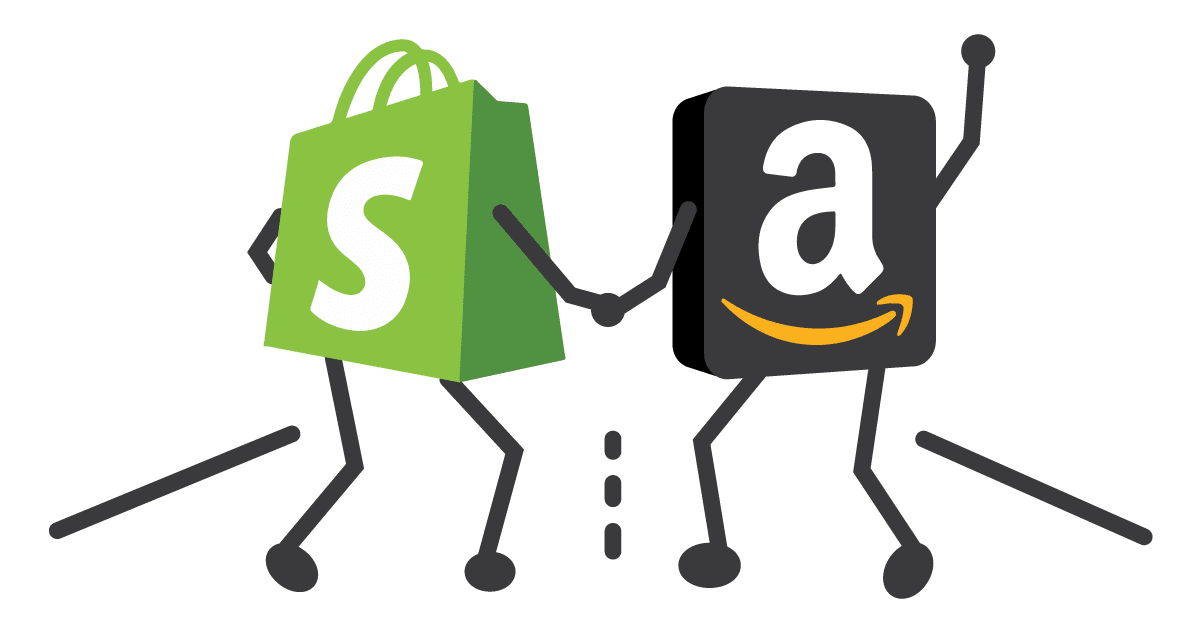Success on Amazon can be a double-edged sword. Brands get easy and efficient access to hundreds of millions of shoppers but their ability to build direct and lasting relationships is limited. When a brand sells on Amazon, it's Amazon that "owns" the data. Success can be fleeting - a small stumble and you can be relegated to obscurity with little opportunity to recover.
For this reason, even the most Amazon-centric brands quickly realize that they need to diversify their risk. This usually means prioritizing the growth of their own DTC (direct-to-consumer) eCommerce stores. When designed and configured properly, these stores become big enablers to your email marketing, retargeting, up-sell, and cross-sell efforts. If this helps you to keep Amazon at 70% or less of your sales, you'll also sleep better at night.
One of the most popular DTC eCommerce solutions, especially for small to mid-sized brands, is Shopify. While it does have some limitations, it's well priced, very easy to use, and it offers some very strong integration options for the Amazon seller. Here are some of the capabilities that we love the most...
1. Shopify Can Outsource Your Fulfillment to Amazon
If you're already using Amazon's FBA ("Fulfillment by Amazon") service to deliver goods to your Amazon shoppers, you can also use it as your fulfillment service on a Shopify web store! This means that your web orders can be automatically sent to Amazon AND that you don't need to maintain 2 separate inventory pools. With this integration, your Shopify store handles the order, processes payment, and sends transactional emails - the product gets shipped by Amazon and will arrive to your shopper in an Amazon box but you can customize the packing slip to some extent. You can see this capability in action on our B2C site, Bold.Direct.
For use of this service, Amazon charges special MCF ("Multi-Channel Fulfillment") rates which can be quite a bit higher than standard FBA rates. The core Amazon fulfillment integration is "built in" to Shopify (no additional add-ons required) but there are optional services available that add even more functionality including synchronization of shipping rates and more.
2. Shopify Can Allow Buyers to "Pay with Amazon"
One of the biggest barriers to converting shoppers on your brand's DTC store is payments. Buyers are hesitant to provide credit card or other personal information to untrusted sites and will often abandon their purchase when asked. "Amazon Pay" is a great way to help close the deal with those nervous shoppers.
Shopify has built in support for this - before shoppers are even asked sensitive details they have an option to login with Amazon instead. If they choose to do so, not only is payment handled securely by Amazon but address and other critical customer information is also instantly transmitted to your store to allow for streamlined checkout. A fast checkout = more sales.
Using this feature requires signup with Amazon and agreement to additional payment processing fees. These fees are comparable to those of other payment gateways (Stripe, Paypal, etc.).

3. Shopify Can Sync Product Content (and Price) with Amazon
Maintaining one store's content is hard enough... Maintaining multiple stores and keeping them in sync can be maddening. Shopify allows you to keep your local content and your Amazon content in sync. This includes item descriptions, images, inventory levels, and even pricing. Shopify offers some basic functionality "built in" through their Amazon channel. To achieve true sync nirvana, however, you'll need to subscribe to some additional Shopify add ons. ByteStand is one tool that we've used and recommend.
4. Shopify Can Pull Ratings and Reviews From Amazon
There are technical solutions available in Shopify's App Store that do this very thing. It's also a nice way to encourage your store shoppers to check out Amazon if they are so inclined.
5. Shopify Can Send Shoppers to Amazon if They Don't Buy at Your Site
While closing the shopper on your own website is likely more profitable than an Amazon sale, any sale is better than no sale. One final integration opportunity is to use "exit intent" messaging on your web store to hit shoppers with an Amazon offer.
How does this work? A number of Shopify apps (OptiMonk is one that we like) will allow you to catch people in the final seconds before they leave your site and hit them with a custom popup message. Use these tools to tell the shopper that your assortment is also available on Amazon (with a link to your Amazon store) or, better yet, provide them a discount code for instant savings. You get the sale and your shopper leaves satisfied - a double win!
Multi-channel eCommerce is hard but it gets a little bit easier when you get all of the pieces working together. Shopify and Amazon have some great integration options that can save you and your team hundreds of hours or more per year so that you can focus on the more strategic parts of running your product business. More efficiency, more growth, and less frustration - what more could you want?






